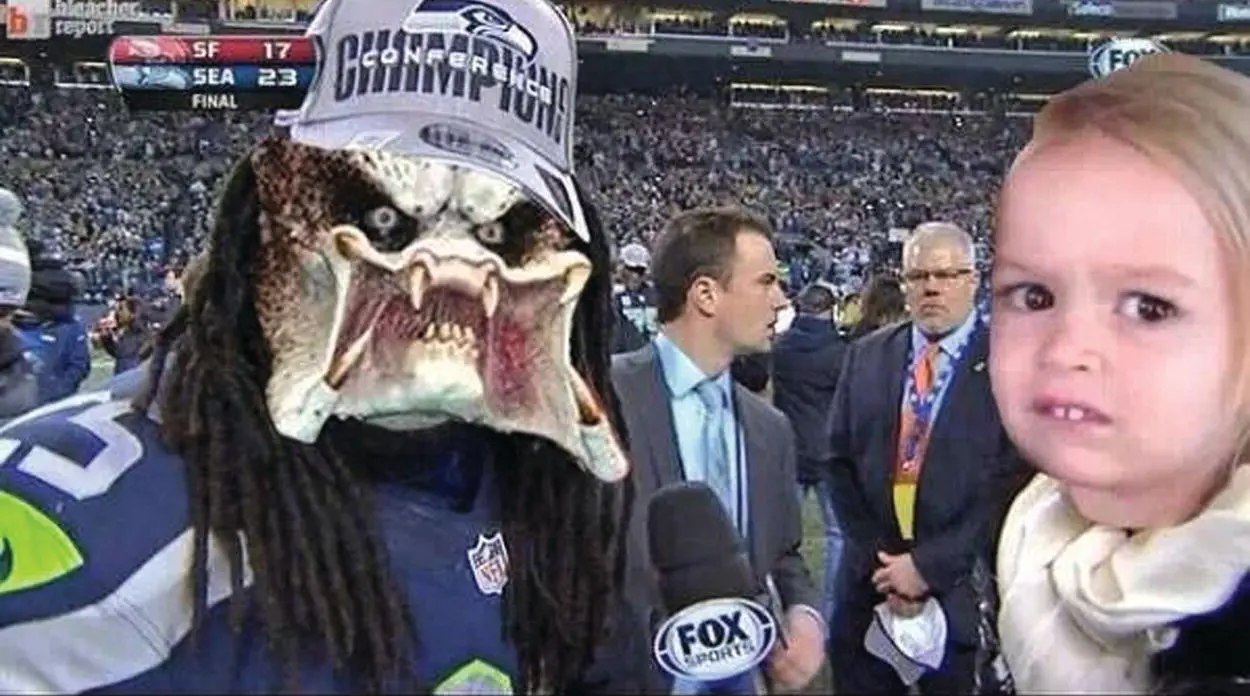LO2Identify the ethical dimensions of visual manipulation, framing, appropriation, and intellectual property.
Photographers have altered their images long before digital picture taking and Photoshop. Search for “digitally manipulated photos” and you'll find multiple sources that document and illustrate doctored pictures stretching back to the 1800s. In professional situations, ethical issues still arise as modern media organizations make decisions about how to portray male and female politicians and celebrities.
To Tell the Truth … or Not
During the 2008 US presidential election, Newsweek magazine ran a cover story on vice presidential candidate Sara Palin featuring a closely cropped photo and following its longstanding policy of not retouching photos (Baird, 2016). The photo caused an uproar because critics said it was cruel, revealing wrinkles and some facial hair. Photographers for Newsweek said they had set up for a male candidate, not a female candidate thus using stronger, and some would say harsher, lighting for the shoot. The managing editor commented that Newsweek used unretouched photos of men on a regular basis. As Baird (2016) wrote, “ Newsweek was accused of sexism because we did not (original emphasis) airbrush the photo. The truth was, we'd portrayed Ms. Palin just the way we did male candidates.” This incident points out how expectations of women's appearances are far different from men's, and people apply different and gender‐based ethical judgments.

Figure 2.3 Intentionally cropped photo of President Trump’s 2017 inauguration day photo.
Source: Scott Olson/Getty Images News/Getty Images.
Nearly a decade later, President Trump instructed the National Park Service to remove empty space and make the audience look larger in his 2017 inauguration day photo posted to social media (Figure 2.3). A government photographer admitted to investigators that he intentionally cropped photos to fit the statement of Trump's then‐press secretary Sean Spicer, “This was the largest audience to ever witness an inauguration – period” (CNN, 2018).
Visual Manipulation Issues
Technology allows people to easily create visual memes from their own photos or others' images and share them on social media. For example, when Fox Sports reporter Erin Andrews interviewed star NFL player Richard Sherman after a close‐fought game, Sherman shouted that he was the best corner in the game, launching scores of memes that called on visual popular culture. The memes, mashups of Sherman photos and images of the Incredible Hulk, an alien, and a bully, tended to characterize Sherman as a scary and frightening individual (Figure 2.4), possibly even threatening to Andrews (Page et al., 2016).
Professionally, from retouched photos in fashion spreads and ads to digital effects in video and motion pictures, enhanced images are part of our daily media consumption. They're not all without harm. Depictions of thin, attractive female models and celebrities in movies, on television, and in advertising have been shown to lead young women to have unreasonable expectations about their own bodies and to undermine their self‐ confidence: a negative consequence of seeing those images (Gleeson and Frith, 2006). A magazine retoucher for Vogue magazine reported altering 144 pictures in the magazine for fashion articles and for advertising (Orbach, 2011). Some critics might argue that the images thus are not authentic and represent a false “reality” to readers of the magazine. Others might argue that everyone knows that such images are carefully posed, chosen, and fine‐tuned to present clothing and other products in the most appealing fashion.

Figure 2.4 Meme depicting Richard Sherman as The Predator film character.
Source: Athletize.
FOCUS: Digital Manipulation
Photo manipulation is a contentious area in journalism, advertising, and other forms of strategic communication. From almost the beginning of photography, it became possible to manipulate, edit, alter, and combine images, thus changing their meanings in subtle or blatant ways. Celebrated US Civil War photographer, Mathew Brady, made a portrait of General William Tecumseh Sherman's top officers – but later added a missing officer who Brady evidently thought should be part of the record (Strauss, 2011). More recently, Time magazine edited and darkened a cover photo of African American murder suspect O.J. Simpson in a move that some said had the effect of making him look more menacing (Black and Roberts, 2011).
News organizations and professional photojournalism organizations have specific guidelines regarding manipulation. The Associated Press (AP) policy begins, “AP visuals must always tell the truth. We do not alter or digitally manipulate the content of a photograph in any way” (AP n.d.). However, the policy goes on to say minor adjustments are acceptable including cropping, dodging, and burning, conversion into grayscale and normal toning and color adjustments which should be “limited to those minimally necessary for clear and accurate reproduction” (AP n.d., para. 2).
The New York Times also has policies against photo manipulation, however, it acknowledged that fashion photography in its T Magazine has different rules (Sullivan, 2013). The magazine's fashion editors argued that fashion is a different genre of photography and that the publication's readers recognize that “fashion is fantasy.” Their public editor (an ombudsperson) suggested that fashion spreads should be subject to the same rules as any other part of the publication or at the very least should have a sort of warning label about the different standards for fashion (Sullivan, 2013). Of course, these policies do not govern the photo manipulation that goes on in fashion advertising carried on their pages. Fashion brands and advertisements frequently manipulate photos to make models appear thinner and to eliminate “flaws” they may have. Some critics argue that such alterations give people unrealistic ideas about body images they may aspire to and may even lead to eating disorders (Bissell, 2006; Reaves et al., 2004).
In the past, with film‐based, analog photography, it was usually possible to compare film negatives with altered pictures and detect a fake. Today, however, people with even minimal skills can create mashups, edit their own photos, remove or add individuals, and so on. Individuals can easily share images on social networks like Snapchat, Facebook, and Instagram.
Framing that Distorts Reality
Decisions about how tightly a photographer frames their image can make a significant difference in how viewers interpret its meaning. The famous wartime photographer, Robert Capa said, “If your pictures aren't good enough, you're not close enough” (Bird, 2002). For many photographers, deciding how closely a person or event should be shot relates more to the skill and artistry of good photography rather than consideration of how they may be altering viewer perceptions. In an effort to create a more arresting or dramatic photo, the photographer may be presenting an image that distorts the reality of the event.
Читать дальше














